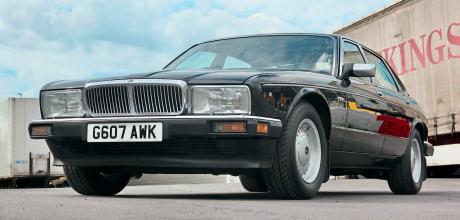1989 Daimler Sovereign 3.6 XJ40
The Daimler 3.6 was the ultimate luxury variant of the XJ40. We tracked down a very special one with just 12,000 miles on the clock.
WORDS AND PHOTOS: CRAIG CHEETHAM
CLASSIC DRIVE The car that got the cream
DAIMLER XJ40 RARITY
We take a trip in the plushest – and most rare – of all the XJ40 variants: the Daimler Sovereign.
As rapidly appreciating classics go, the Jaguar XJ40 is finally at the forefront. It’s been a long wait for Browns Lane’s 1980s flagship, but collectors are finally cottoning on to the appeal of what was, when it was new, the company’s most technologically advanced car ever.
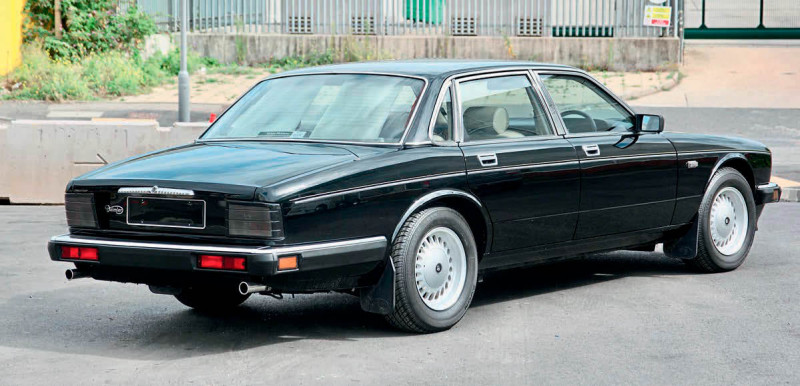
The use of the Daimler badge on the XJ40 presented an interesting juxtaposition for Jaguar, with one of the oldest and most steeped-in-tradition names in motoring history applied to its most avant-garde car yet. It was a fusion of traditional and modern – a car aimed at Jaguar’s more traditional, often older customer despite being the jewel in the XJ40 range’s crown.
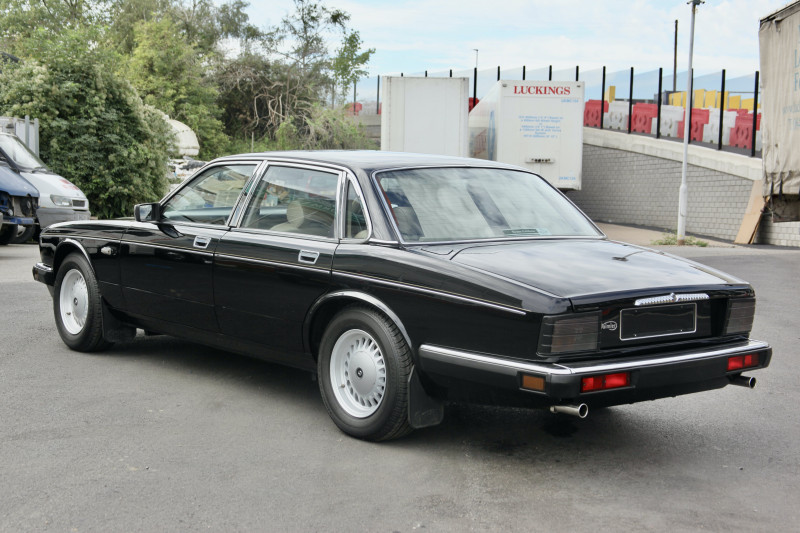
But then, Daimler’s association with Jaguar was always a peculiar one. Not to be associated with the Daimler company that owns Mercedes-Benz, the company was originally a completely independent British operation that used the name under licence.
In 1910, the company was bought by the Birmingham Small Arms company (BSA), better known for its motorbikes, before being sold to Jaguar in 1960.
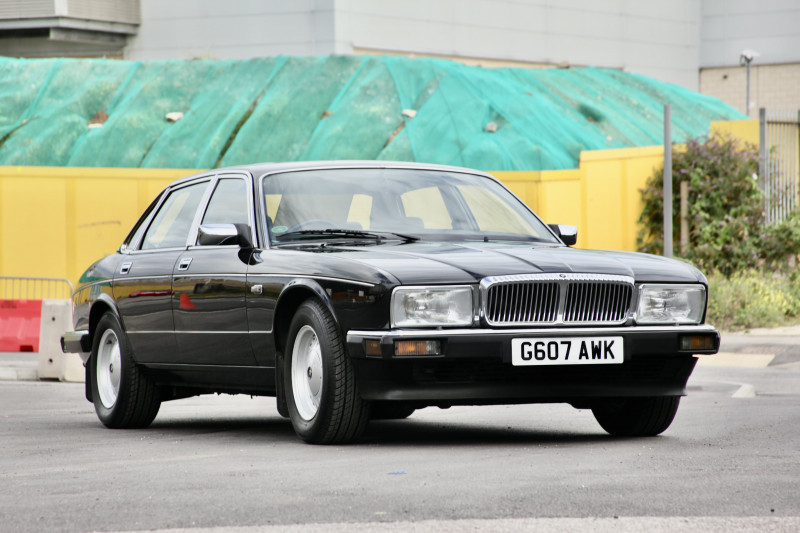
The first Daimler to share its platform with a Jaguar was the V8 250 of 1962, with a small capacity 2.5-litre V8 engine of Daimler’s own design, fitted to the body and chassis of the Mk 2 saloon. Distinguished by its fluted grille, split front seat and standard automatic transmission, the 250 was marketed as a luxury-orientated alternative to the MK 2 sports saloon – a theme that would continue until the last appearance of the Daimler name on a Jaguar vehicle in 2005, with the X350-based Super V8.
When the XJ40 appeared in 1986, the Daimler’s position in the line-up was clear. It was to be something a little more exclusive, rather than the upmarket trim level that the ‘Daimler Sovereign’ had become during the Series 2 and 3 gestations of the XJ6.

The Sovereign name, which had adorned Daimler cars since 1966 when it appeared on a badge-engineered Jaguar 420, became a Jaguar trim level, marking out the best-appointed variant in the Jaguar line-up (and becoming the most popular XJ40 in the process), while the Daimler name would be applied to a standalone model. Known at launch as simply the Daimler 3.6, the car was the flagship of the XJ40 line-up and was only available with the larger engine. It was immediately identifiable thanks to its ‘fish-tank’ rectangular headlamps and fluted radiator grille, though there were other Daimler-defining features as well. The matt black boot plinth (deleted by the end of 1987), darker rear light clusters, fluted chrome boot trim, D-motif wheel centre caps and a chrome rubbing strip along the flanks of the car are the other giveaways.
Inside, the Daimler was the very essence of luxury. It had full leather, walnut veneer picnic tables in the rear and lambs’ wool over-rugs, while the rear seat was split into two separate seats, with an elaborate centre armrest that folded down in front of a wood-veneered oddments tray – though a traditional three-seater rear bench was offered as a cost-free option for those who needed a five-seater.
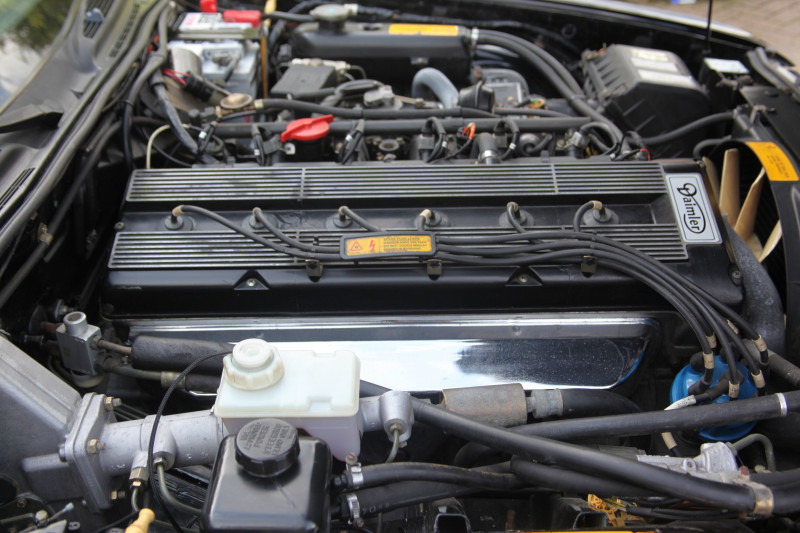
The leather seats in Daimler models were of a higher quality than those fitted to Jaguar variants, and featured a fluted appearance that echoed the style of the radiator grille and rear boot plinth, complemented by high quality burr walnut inserts, with additional fillets around the window buttons on the doors.
The door cards were also fully trimmed in leather, while all Daimler models were given a large sliding metal sunroof as standard. Even the boot was luxurious – fully carpeted, with a flocked spare wheel cover and stylised attaché case tool kit.
Indeed, the specification was fantastic – standard equipment included air conditioning, metallic paint, cruise control, headlamp power wash, electrically-adjustable heated mirrors, self-levelling rear suspension, eight-way adjustable electric heated front seats and a top of the range branded Clarion radio-cassette player, which was the only place in the car where the Jaguar ‘leaper’ was immediately visible, on the cassette deck flap. Re-engineering such a small component for Daimler was clearly a cost too far in the XJ40’s development. At launch, the Daimler 3.6 had a list price of £32,000 – or £4000 more than the top spec Jaguar 3.6 Sovereign The Daimler was sold across European markets and Australia, but was never sold in the USA, where the brand had no recognition. Instead, the equivalent model was known as the Jaguar Vanden Plas, and featured the same specification and interior treatment, but minus the fluted grille.
Like all XJ40s, it was a wonderful car to drive, but the example in our photos is barely used. It spent the first six months of its life as a Jaguar demo, and then spent the next 31 years in an underground car park in Kensington. Its owner had an address in the exclusive West London suburb, but worked all over the world, visiting his native UK only four or five times a year, during which the Daimler was kept ready for him to use on the rare occasions that he needed a car. As a result, it has amassed just 12,200 miles in 32 years and has to be the best and most original surviving example of an unrestored XJ40, let alone a Daimler 3.6.
The car was serviced every year up to 2021 (sometimes covering less than 300 miles between) by esteemed Jaguar agent R A Creamer, renowned for looking after the cars of the Royal Household, and which supplied him with the car in the first place. Driving it in a modern context reminds you of just how luxurious the Daimler was compared to standard Jaguar models, something you notice immediately thanks to its thick wool floor rugs and sumptuous cream leather.
The narrow steering wheel and delicate walnut veneer give it the feel of a true luxury car – akin to a Rolls-Royce or Bentley on the inside, but with the performance and agility that you expect from a Jaguar. Certainly, the 3.6-litre engine is no slouch, feeling as eager and lively as it ever did. The impressive acceleration is matched by a throaty exhaust note that brings a note of Jaguar’s sports saloon heritage to Daimler’s purely luxurious image.
Back in 1989, when the car was new, the Daimler would have been the perfect car for ‘old money’, with all the accoutrements expected by retired army majors and captains of industry. A cliché? Maybe – but this was the market at which the car was targeted, while the Jaguar versions were aimed at a more youthful market, and the owner of this example (now retired and in his late 80s) fitted the profile perfectly. In the rear, the Daimler feels every inch like a car to be driven in, as opposed to one you drive yourself. The sculpted rear seats offer better comfort than a standard rear bench, while their design also helps offset the limited rear legroom of the standard wheelbase XJ40. The detailing is beautiful, too. Flip down the walnut tray tables, and the chrome ringed drinks holders add to the upmarket appeal.
Coupled with the XJ40’s traditionally wonderful ride quality, the Daimler is a fabulous car that delivers a cossetting experience to both driver and passengers alike. Any Daimler 3.6 is a special car, not least because of their comparative rarity these days – at the end of 2021, according to DVLA data, there were just 40 left taxed on UK roads and a further 112 on SORN. Find a good one and not only will it be a marvellous thing to own, but also a sound investment for the future. This one? Well, surely it’s the best?


